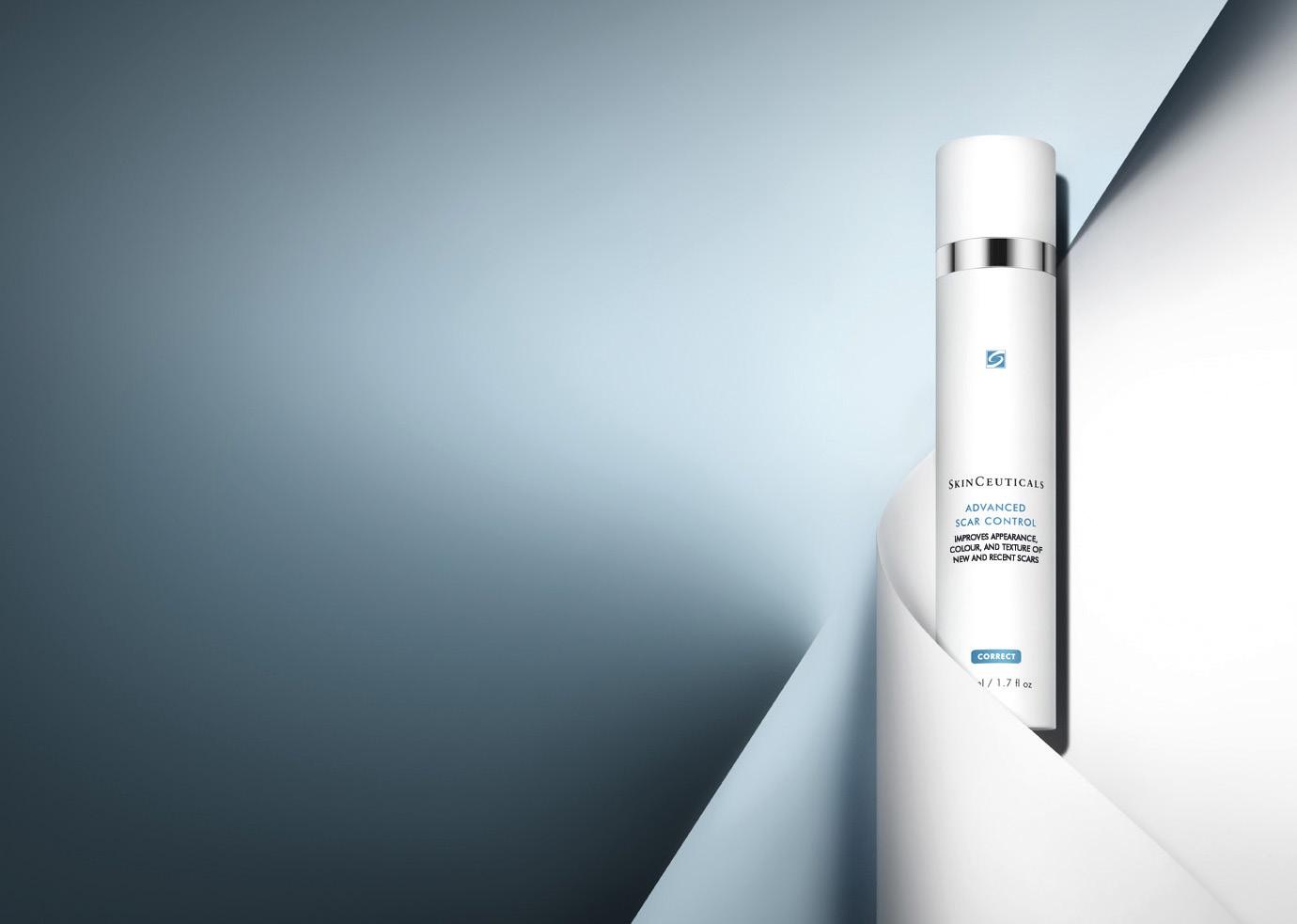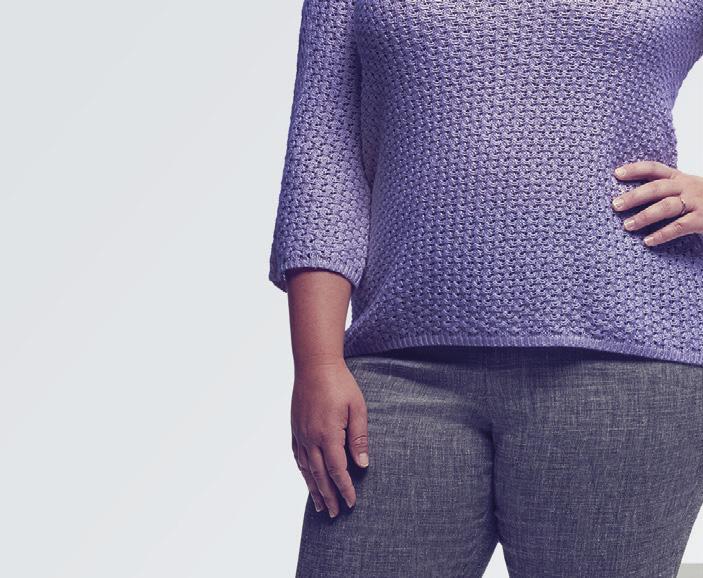
15 minute read
Improving Your Digital Presence
Digital marketing specialist Dave Baldwin explains his top insider tips for making yourself stand out online
Why focus on digital? In short, it’s where your patients are! Even on social media alone there are currently 53 million active users in the UK, which is 77.9% of the population.1 This shouldn’t be surprising, considering how websites, streaming, social media and online purchasing have changed, even in the last five years. It’s this increase in choice through better technology and availability of information which empower consumers, and why aesthetic businesses must take notice.2 This changing landscape can be a blessing or a curse, depending on how prepared you are to meet the challenge of presenting your brand and your business in the digital age. Whilst word of mouth may still be an initial driver for many, your first impression with new patients will not be in person, but instead be likely through your digital presence. This is supported by Allergan’s 360 Report data from 2019 which looked at a survey of 14,457 aesthetic conscious consumers worldwide and found that 37% of consumers search online, 37% receive a recommendation from a friend/family/co-worker and 33% receive a recommendation from their existing physician.3 The impact of COVID-19 Another key driver of how quickly things can change has been the COVID-19 pandemic. Those early digital adopters that were conducting virtual consultations, receiving online reviews, and developing their email and social media channels before the pandemic may have benefited over those who focused more on traditional marketing activities. Insurance provider Hamilton Fraser’s recent survey of 1,360 UK practitioners concluded that whilst the longterm effects of COVID-19 on the aesthetics specialty are unclear, practitioners should strive to offer a high level of service through their digital channels especially when social distancing may mean aftercare must be conducted virtually.4 This not only shows the importance of incorporating digital tools, but how to use them effectively.
Advertisement
The consideration stage There has been an increase in openness in discussing aesthetic treatments on social media channels and review sites, with 82% of consumers believing that injectables are socially acceptable, and 71% willing to see a professional.3 Whilst in the past, a simple website and a consistent social media presence may have been sufficient, now businesses that are not investing more in their digital presence will fall behind. The consideration stage of the patient journey is key because it’s when people start to develop their initial consideration set or evoked set of options. These can come from internal sources such as family, friends, co-workers and external sources such as search engines, websites and social media accounts. Nearly 70% of brand choices are made at this point, the beginning of the journey, when a consumer is first triggered.2 So where should aesthetic practitioners place their emphasis and what are a few of the key things to consider?
1. Stay front of mind with the
Facebook Pixel One of first very simple things you can do with your marketing team or agency partner is to implement a Facebook Pixel on your website.5 The Facebook Pixel is a small piece of code you can setup in your Facebook business manager account and place on your website. Your Facebook business manager is the ‘hub’ where you access all of your Facebook and Instagram pages and ad accounts. So, what does the Pixel do? Imagine eight people have visited your clinic
The consumer considers an initial set of brands 2
Active evaluation Brands enter and exit the consideration set at any point up to purchase
1
Initial consideration set 4
Trigger Loyalty loop 3
Consumer re-purchases current brand without shopping for others
Post-purchase experience
Moment of purchase
Ultimately, the consumer selects the brand
left saying they would ‘think about it’. The Facebook Pixel helps to bring those potential customers back to your website by tracking actions taken on the site, such as browsing certain pages, or purchasing products. These actions are linked to users Facebook accounts and for up to 180 days after the action, meaning these potential customers could be targeted for up to six months. When setting up your Facebook business manager and Facebook Pixel make sure you remain the owner of the page, not the person managing it, as this may cause issues with account access if you change your staff.
2. Lookalike audiences for great first impressions Another advantage of the Facebook Pixel is the audience data you collect can make your social media ads strategy more effective through a lookalike audience. How does a lookalike audience work? It uses Facebook’s algorithm to select people that have similar interests to those found in your pixel data.6 This means you are focusing your initial advertisements on potential patients that are more likely to be interested in your products or services. As you run Facebook ad campaigns over months or even years, this data gets richer and ultimately improves your click through rates and conversions. A key thing to note is that lookalike audiences can be used to reach people with specific content across all Facebook channels including Instagram. LinkedIn also has a similar feature which can be useful if you are trying to reach a business-to-business audience, for example aesthetic training academies.
3. Don’t be intimidated by video content It’s a good idea to invest in a videographer or utilise a modern smartphone, a one or two-year-old iPhone or Android should do the trick. Capturing great content starts with you and your team, for example recording videos explaining the treatments and services you offer. Be sure to cover the key points of your ad within the first few seconds and keep videos short. Sharing results is a great way to engage potential patients, however Facebook will often block before and after photos from paid promotions so using patient testimonies is a great alternative. Once you have your footage, you can develop bespoke ads with a designer. iPhones are great for informal social media stories, but to achieve high-quality results in the right format a videographer or marketing professionals is a must. There are a number of freelancer websites such as Fiverr.com or upwork.com which can help you choose a local videographer or designer with the right experience and fees for your budget.
4. Optimise your landing page Have you heard of the three second rule? If your site doesn’t load within three seconds, you are likely to lose that customer.7 Furthermore, if your landing page isn’t attractive with engaging content (preferably video) and easy to navigate with clear calls to action then your campaign performance will suffer. Test your page with friends or coworkers to see if anything could be easier to use, and research A/B testing. This is where you create different versions of your pages to see what generates the most engagement. If you are interested to learn more, Hubspot’s blog is a great resource.8
We are all impatient when searching online so your site must be very fast, and mobile optimised. This means your website should be able to adapt to the screen size of a computer, tablet or smart phone, which two out of three of your customers will be using.9,10 Most site builders are now mobile ready, even the free ones, and you will also get no favours from Google in terms of search engine optimisation (SEO) if your site isn’t mobile optimised.
5. Google likes your reviews 86% of people read reviews for local businesses, and 40% of consumers only consider reviews written in the last two weeks.11 This means potential patients will be looking for reviews, and recent ones. This can be easier to manage when they come from the guarantor review sites such as Trustpilot. They provide potential patients with useful information during that consideration stage when they are comparing their options, and now Google is getting in on the act.
Google ultimately exists to provide the user with the best results based on what they’ve searched. For a small fee, sites like Trustpilot, or RealSelf now have a useful piece of code you can include in your website to display your rating via the platform. Trustpilot provides a full overview on their features and pricing on their business site. Google will now consider reviews within the great many other facts that determine SEO.12 This can be used to your advantage, as these sites tend to have many visitors and strong SEO profiles. By aligning your site and your reviews with the provider, Google will reward the site with a more favourable listing compared to smaller review providers. An alternative to the subscription review sites, which I would highly recommend to clinics of all sizes, is a Google My Business page. This is free to setup with Google and will have a great SEO benefit whilst providing another outlet for patients to leave reviews on your services.13
Fail to prepare, prepare to fail Almost everything that you do to enhance your digital presence can be tracked, measured, and optimised to improve performance. This is a big advantage over traditional marketing channels regardless of your clinic’s size and budget. But this is only the case if your tracking and campaign strategy has been planned and implemented correctly. If you are a solo entrepreneur or a smaller clinic with no internal marketing team, find a professional/agency who comes recommended who understands the market. This will allow you to prioritise budget, give your team more direction and develop a clear list of deliverables to be more successful in developing your digital presence.
Dave Baldwin is a chartered institute of marketing professional and digital marketing specialist with more than eight years’ experience in the dermatology and medical aesthetics sector. Baldwin is currently head of digital at Sinclair Pharma and is responsible for the implementation of global omni-channel digital activities across all Sinclair markets.
REFERENCES
1. Statista Research Department, 2021, The total number share and population of active social medi users in the United
Kingdom (UK) In January 2021. <https://www.statista.com/ statistics/507405/uk-active-social-media-and-mobile-socialmedia-users/> 2. Mckinsey Marketing & Sales, 2017, Ten years on the consumer decision journey: where are we today? <https://www.mckinsey. com/about-us/new-at-mckinsey-blog/ten-years-on-theconsumer-decision-journey-where-are-we-today> 3. Allergan 360 Report, 2019 4. Hamilton Fraser Knowledge Centre, 2020, Impact of Covid-19 on the aesthetics industry, <https://hamiltonfraser.co.uk/ knowledge/covid-19-aesthetics-industry/> 5. Facebook, <https://www.facebook.com/business/ help/742478679120153> 6. Johnathan Dane, undated, Facebook Remarketing: Using
Targeted Advertising Campaigns to Increase Sales <https:// www.bigcommerce.co.uk/blog/facebook-remarketing/#what-isfacebook-remarketing> 7. Akami, Mobile Load Time and User Abandonment, <https:// developer.akamai.com/blog/2016/09/14/mobile-load-time-userabandonment> 8. Hubspot, How to do A B Testing, <https://blog.hubspot.com/ marketing/how-to-do-a-b-testing> 9. Eric Enge, 2021, Mobile Vs. Desktop Usage in 2020 <https:// www.perficient.com/insights/research-hub/mobile-vs-desktopusage> 10. Rick O’Neill, Optimising Websites for Mobile, 2020, <https:// aestheticsjournal.com/feature/optimising-website-for-mobile> 11. Real Self Team (2019) Reviews. What the data says about why they matter <https://insightscenter.realself.com/reviewstats-2019/> 12. Google, Search Engine Optimisation (SEO) Starter Guide (2021) <https://developers.google.com/search/docs/beginner/seostarter-guide> 13. Rick O’Neill, Using Google My Business, Aesthetics Journal, 2021




Your patients have the will. You can offer them the way.
Patients achieved signifi cant and sustained weight loss, in conjunction with reduced calorie intake and increased physical activity, in 1-year and 3-year trials vs placebo 1,2*
Similar to natural glucagon-like peptide-1, Saxenda® works to decrease appetite and thereby reduce food intake3



Indication: Saxenda® is indicated as an adjunct to a reduced-calorie diet and increased physical activity for weight management in adult patients with an initial Body Mass Index (BMI) of ≥ 30 kg/m² (obesity) or ≥ 27 kg/m² to < 30 kg/m² (overweight) in the presence of at least one weight-related comorbidity such as dysglycaemia (pre-diabetes or type 2 diabetes mellitus), hypertension, dyslipidaemia or obstructive sleep apnoea. Treatment with Saxenda® should be discontinued after 12 weeks on the 3.0 mg/day dose if patients have not lost at least 5% of their initial body weight. If you would like to request a visit from a representative please contact us on obesityuk@novonordisk.com For all product related enquiries please contact Novo Nordisk Customer Care Centre on 0800 023 2573.
* In the 1 year trial patients taking Saxenda® (n=2437) had a baseline mean body weight of 106.2 kg. Completers’ mean weight loss at week 56 of treatment was 8.4 kg. Patients taking placebo (n=1225) had a baseline mean body weight of 106.2 kg. Completers’ mean weight loss at week 56 of treatment was 2.8 kg1. In the 3 year trial patients taking Saxenda® (n=1505) had a mean baseline body weight of 107.5 kg. Completers’ mean weight loss at week 160 of treatment was 6.5 kg. Patients taking placebo (n=749) had a mean baseline body weight of 107.9 kg. Completers’ mean weight loss at week 160 of treatment was 2.0 kg2 . References: 1. Pi-Sunyer X, Astrup A, Fujioka K, et al; for the SCALE Obesity and Prediabetes NN8022-1839 Study Group. A randomised, controlled trial of 3.0 mg of liraglutide in weight management. N Engl J Med. 2015;373(1):11-22. 2. le Roux CW, Astrup A, Fujioka K, et al; for the SCALE Obesity and Prediabetes NN8022-1839 Study Group. 3 years of liraglutide versus placebo for type 2 diabetes risk reduction and weight management in individuals with prediabetes: a randomised, double-blind trial. Lancet. 2017;389(10077):1399-1409. 3. Saxenda® Summary of product characteristics. Bagsvard, Denmark: Novo Nordisk A/S.
Prescribing Information
Please refer to the Saxenda® summary of product characteristics for full information. Saxenda® Liraglutide injection 3 mg. Saxenda® 6 mg/mL solution for injection in a pre-fi lled pen. One pre-fi lled pen contains 18mg liraglutide in 3mL. Indication: Saxenda® is indicated as an adjunct to a reduced-calorie diet and increased physical activity for weight management in adult patients with an initial Body Mass Index (BMI) of ≥ 30 kg/m² (obesity) or ≥ 27 kg/m² to < 30 kg/m² (overweight) in the presence of at least one weight-related comorbidity such as dysglycaemia (pre-diabetes or type 2 diabetes mellitus), hypertension, dyslipidaemia or obstructive sleep apnoea. Posology and administration: Saxenda® is for once daily subcutaneous use only. Is administered once daily at any time, independent of meals. It is preferable that Saxenda® is injected around the same time of the day. Recommended starting dose is 0.6 mg once daily. Dose should be increased to 3.0 mg once daily in increments of 0.6 mg with at least one week intervals to improve gastro-intestinal (GI) tolerability. If escalation to the next dose step is not tolerated for two consecutive weeks, consider discontinuing treatment. Treatment with Saxenda® should be discontinued after 12 weeks on the 3.0 mg/day dose if patients have not lost at least 5% of their initial body weight. Daily doses higher than 3.0 mg are not recommended. No dose adjustment is required based on age but therapeutic experience in patients ≥75 years is limited and not recommended. No dose adjustment required for patients with mild or moderate renal impairment or mild or moderate hepatic impairment but it should be used with caution. Saxenda® is not recommended for use in patients with severe renal impairment including end-stage renal disease, or severe hepatic impairment or children and adolescents below 18 years. Contraindications: Hypersensitivity to the active substance or to any of the excipients. Special warnings and precautions for use: There is no clinical experience in patients with congestive heart failure New York Heart Association (NYHA) class IV and Saxenda® is not recommended for use in these patients. It is also not recommended in patients with eating disorders or treatment with medicinal products that may cause weight gain, as Saxenda® for weight management was not investigated in subjects with mild or moderate hepatic impairment; it should be used with caution in these patients. Use of Saxenda® is not recommended in patients with infl ammatory bowel disease and diabetic gastroparesis since it is associated with transient GI adverse reactions including nausea, diarrhoea and vomiting. Acute pancreatitis has been observed with the use of GLP-1 receptor agonists, patients should be informed of the characteristic symptoms. If pancreatitis is suspected, Saxenda® should be discontinued. If acute pancreatitis is confi rmed, Saxenda® should not be restarted. In weight management clinical trials, a higher rate of cholelithiasis and cholecystitis was observed in patients on Saxenda® than those on placebo, therefore patients should be informed of characteristic symptoms. Thyroid adverse events such as goitre have been reported in particular in patients with pre-existing thyroid disease. Saxenda® should be used with caution in patients with thyroid disease. An increased risk in heart rate was observed in clinical trials. For patients who experience a clinically relevant sustained increase in resting heart rate, treatment with Saxenda® should be discontinued. There is a risk of dehydration in relation to GI side effects associated with GLP-1 receptor agonists. Precautions should be taken to avoid fl uid depletion. Patients with type 2 diabetes mellitus receiving Saxenda® in combination with insulin and/or sulfonylurea may have an increased risk of hypoglycaemia. Fertility, pregnancy and lactation: Saxenda® should not be used during pregnancy. If a patient wishes to become pregnant, or pregnancy occurs, treatment with Saxenda® should be discontinued. It should not be used during breast-feeding. Undesirable effects: Very common(≥1/10); nausea, vomiting, diarrhoea, constipation. Common (≥1/100 to <1/10); hypoglycaemia, insomnia, dizziness, dysgeusia, dry mouth, dyspepsia, gastritis, gastrooesophageal refl ux disease, abdominal pain upper, fl atulence, eructation, abdominal distension, cholelithiasis, injection site reactions, asthenia, fatigue, increased lipase, increased amylase. Uncommon (≥1/1,000 to <1/100); dehydration, tachycardia, pancreatitis, cholecystitis, urticaria, malaise, delayed gastric emptying Rare (≥1/10,000 to <1/1,000); anaphylactic reaction, acute renal failure, renal impairment. The Summary of Product Characteristics should be consulted for a full list of side effects. MA numbers and Basic NHS Price: 5 x 3 ml pre-fi lled pens EU/1/15/992/003, £196.20. Legal category: POM. Full prescribing information can be obtained from: Novo Nordisk Limited, 3 City Place, Beehive Ring Road, Gatwick, West Sussex, RH6 0PA. Marketing Authorisation Holder: Novo Nordisk A/S, Novo Allé, DK-2880 Bagsværd, Denmark. Date last revised: December 2019.








